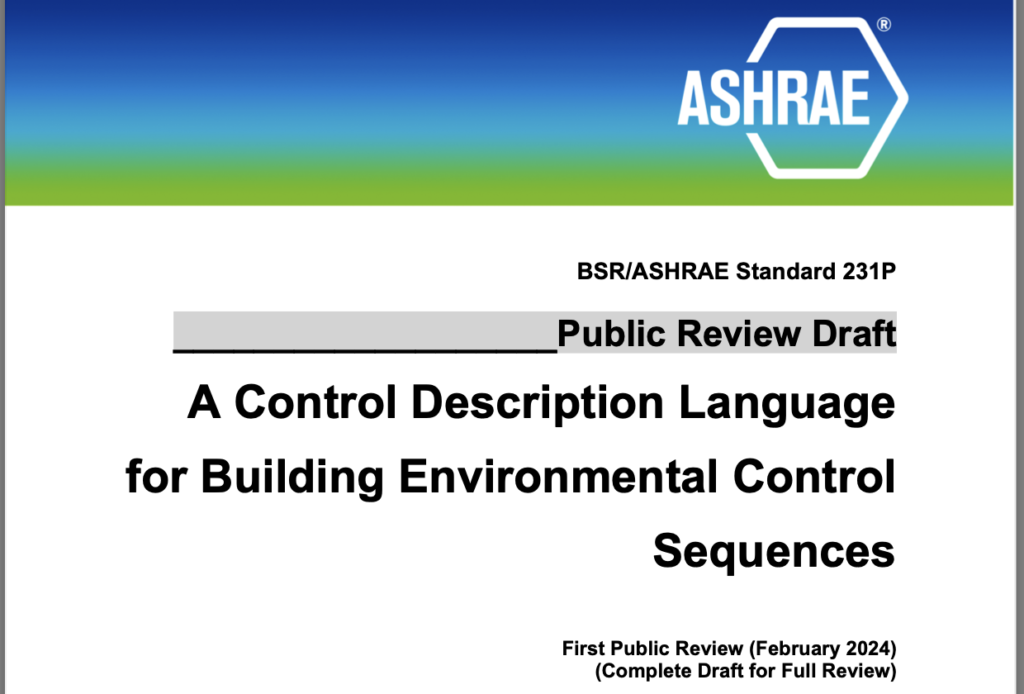
The ASHRAE proposed standard 231P project started three years ago with the intent of creating an open, interoperable, and machine readable way to exchange control sequence logic. This allows for the digitization of control design and delivery, and to enable the logic in a control system to be shared by tools such as “digital twins”. The standard draft is now out for review at http://OSR.ASHRAE.ORG. The public is invited to download, review and enter comments on the proposed standard.
The standard defines a “Control Description Language” (CDL) which includes the syntax, structure, and content using the Modelica modeling language. It also allows for the expression in JSON-LD in what is called the “Controls eXchange Format” (CXF). CDL and CXF share the definition of over 130 elementary function blocks – for example “ADD” or “PID”. The intent of this standard is to allow for a designer to either select a standard sequence using a tool (such as http://ctrl-flow.lbl.gov), or to write their own. The sequence is then provided to the control contractor as a CDL or CXF file. The contractor can import this sequence into their tools, and edit it as needed to work for a project. This eliminates the need for the controls technician to read and interpret a written sequence and to write the necessary code. This same method can be used to export sequence logic from an existing system – for use in tools that might be used for optimization or other analysis. The CXF format is intended to be easily added to existing control product tools, while CDL may work better in new “next generation” control systems.
The efforts of the 231P project team have been coordinated with other ASHRAE efforts including ASHRAE 135 (BACnet), Guideline 36 (High Performance Sequences), and ASHRAE 223P (Semantic Tags for Building Data). Used together these standards have the potential to define a range of interoperable characteristics of a control system, ranging from syntax (how to communicate), to semantics (what the data represents), to content (what the system is attempting to do).
The original work to define CDL started in the Department of Energy funded project “Open Building Control” http://obc.lbl.gov. This effort, led by Lawrence Berkeley Lab, provides many deliverables including a library of control sequences written in CDL, tools for designing and testing sequences http://ctrl-flow.lbl.gov , and support for the modeling and testing of control sequence logic in design and as part of advanced energy models https://lbl-srg.github.io/soep/.
Public feedback is invaluable for the process of developing standards – so please take a look at the draft and enter in your comments before March 18, 2024.


